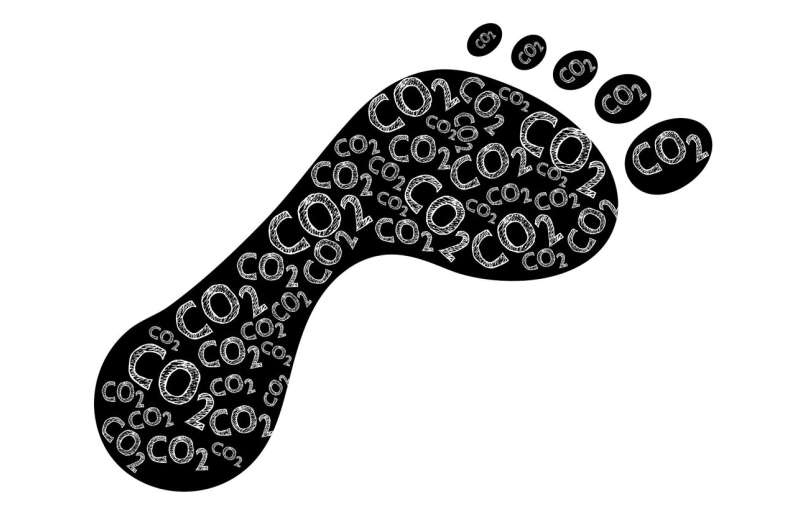Urban areas across the US are undercounting greenhouse gas emissions

Methane emissions from the distribution and use of natural gas across U.S. cities are 2 to 10 times higher than recent estimates from the Environmental Protect Agency, according to a new study from the Harvard John A. Paulson School of Engineering and Applied Sciences (SEAS).
In Boston, methane emissions from the natural gas system are six times higher than recent estimates by the Massachusetts DEP and have not significantly changed in eight years, despite legislation aimed at repairing leaks in natural gas pipelines.
Methane is the most potent greenhouse gas after CO2. Reducing emissions of methane is critical to slowing the pace of global warming. While CO2 has longer-lasting effects, methane has more than 80 times the warming power of CO2 in its first 20 years in the atmosphere, setting the pace for near term warming.
The study, a collaboration between Harvard, Boston University, the Earth System Research Laboratory at the National Oceanic and Atmospheric Administration and the Environmental Defense Fund, used atmospheric measurements of methane and ethane concentrations to track emissions over eight years in Boston. The researchers found that more than half of emissions may be coming from sources other than pipelines, including compressing stations, meters, and appliances such as boilers and furnaces, and other so-called end use emitters.
The study finds that methane emissions from urban natural gas pipelines and end-use emitters account for 20 to 36% of all U.S. methane emissions from natural gas, significantly higher than previous estimates, which found those sources to contribute only about 6% of the load.
"Traditional approaches to estimating emissions from natural gas systems are missing significant sources of methane emissions," said Steven Wofsy, the Abbott Lawrence Rotch Professor of Atmospheric and Environmental Science at SEAS and senior author of the study. "If cities and states want to pass meaningful legislation to curb emissions, they need to know where emissions are coming from, how they change over time, and whether or not the policies put in place to reduce them are working."
The research is published in the Proceedings of the National Academy of Sciences (PNAS).
Today, oil and natural gas systems account for about 30 percent of human-made methane emissions in the U.S., a number that has been rising steadily as natural gas has become an increasingly important energy source.
"Natural gas has been sold as a transitional fuel as we move toward green energy—but its low greenhouse emissions are contingent on a low loss rate as any amount of methane that escapes is going to have a strong climate impact," said Maryann Sargent, a Research Scientist in Environmental Science and Engineering at SEAS and first author of the paper.
Cities calculate methane emissions from natural gas using a so-called bottom-up approach, sampling various emissions sources, and generating an average emission rate for each source. But there is a huge discrepancy when those estimates are compared to measurements of actual methane in the atmosphere.
What accounts for those discrepancies?
To answer that question, the research team designed a top-down study, which started with atmospheric measurements and worked backwards to trace emissions. The researchers installed sensors at two sites in Boston—on a roof at Boston University and on top of a tall building in Copley Square—and three locations outside Boston at Harvard Forest in Petersham, MA, Canaan, NH, and Mashpee, MA. The sensors ran continuously from September 2012 to May 2020.
To differentiate natural gas emissions from other sources of methane such as landfills, the sensors measured levels of methane and ethane, a compound emitted by natural gas but not by other sources of methane. Using a model that considers wind and atmospheric turbulence, the research team was able to calculate natural gas emissions in the Boston area at one kilometer resolution.
The study revealed that emissions were three times higher than the most recent estimates and six times higher than a 2018 study still being used by the state. Emissions remained constant over the eight years, despite the enactment of legislation aimed at curbing emissions by mandating the repair of leaky pipelines.
"It seems like it's a game of whack-a-mole, every time you repair a leak, a new one springs up," said Sargent.
The researchers also noticed that emissions changed seasonally. As pipelines are pressurized year around, the seasonal emissions must be tied to consumption at the end of the pipeline, such as appliances in residential, industrial, and commercial buildings such as boilers, furnaces, and stovetops or flow meters and boosting compressors.
The COVID-19 lockdown of April 2020 shed significant light on the relationship between emissions and consumption. Emissions at the Boston University sensor dropped by 40% during lockdown when many nearby buildings significantly reduced their heat, hot water or stove use.
The researchers found that those seasonal, consumption-based emissions accounted for about 56% of the total natural gas emissions in Boston.
"We didn't expect to see such a strong relationship between emissions and consumption," said Sargent. "This finding shows that the government needs to be looking at emissions beyond just pipes and provides more evidence that we should be moving away from natural gas toward renewable energy to heat and electrify our cities."
This research was co-authored by Cody Floerchinger, Kathryn McKain, John Budney, Elaine W. Gottlieb, Lucy R. Hutyra and Joeseph Rudek.
More information: Majority of US urban natural gas emissions unaccounted for in inventories, Proceedings of the National Academy of Sciences (2021). DOI: 10.1073/pnas.2105804118.
Journal information: Proceedings of the National Academy of Sciences





















